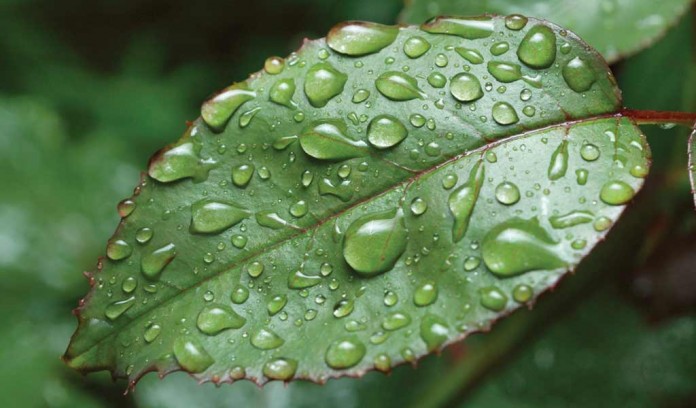Spring and summer weather can impact the health and performance of your lawn and garden plants. Rain, hail and wind damage can potentially destroy plants, too.
Find out how weather conditions — rain, hail, wind and lightning — affect plants and learn some preventative measures you can take when you know stormy weather is on the way.
How to protect plants from rain
Along with sun, rain is the most common element that plants will face throughout the growing season.
Aside from washing away newly planted seeds and damaging seedlings, University of Illinois Extension explains that excess rain can reduce the amount of oxygen in the soil, which damages roots and increases the chances of disease.
Heavy rains can cause soil compaction and erosion. To reduce the effects of soil compaction, spread mulch, Colorado State University Extension explains.
How to protect plants from hail
Cornell Cooperative Extension recommends using row covers (and hoops) to protect plants from hail damage. However, if winds are strong enough, row covers may be lifted off of the ground during storms.
Cornell Cooperative Extension explains that after hail, you may notice that the leaves of pumpkins, squash, zucchini and gourds are heavily damaged, but that doesn’t necessarily mean that the fruit itself is damaged. Sometimes the plants’ large leaves can help to protect the fruit. If plants have established root systems, they will be able to grow new leaves and still produce fruit.
With any amount of damage, plants are more susceptible to disease, says Cornell Cooperative Extension. Consider applying fungicide to plants after hail damage. Overall, each type of plant can be affected differently by hail, so you can individually assess whether or not you should give up on certain plants or do your best to save others.
How to protect plants from wind

To help protect plants from potential wind damage, choose the location of your garden carefully. If there is a slope on your property, consider planting your garden on the southern side of the slope for wind protection, more sunlight and less rain damage than the top or bottom of the slope. A building or even a fence can act as a windbreak.
If tree branches have broken off in strong winds, cleanly cut off the remaining branch to prevent more damage to the tree, according to Michigan State University Extension. Strong winds can lift up trees, exposing the roots. If this happens, Clemson Cooperative Extension says to replant small trees. Large, uprooted trees should be removed.
To prevent small trees from being uprooted, stake them to the ground for up to a year. Too much nitrogen fertilizer can make leaves top-heavy, making the tree more likely to fall over in strong winds.
How to protect plants from lightning
When a tree is struck by lightning, the effects can vary. Some trees catch on fire when struck by lightning. Some trees will not show symptoms of lightning damage until later. According to Clemson Cooperative Extension, you’ll know if a tree has been damaged by lightning when you notice burned bark on the trunk or on branches.
Michigan State University Extension cautions that safety should come first when assessing the storm damage done to a tree, so check to see if part of the tree fell on power lines or anywhere that is a hazard to people.
Remove any loose bark and prune broken branches. The size of the tree and how much damage was done will determine whether or not the tree can be saved.
Proactive tips for protecting plants from storms
The University of Illinois Extension offers these final tips for protecting your plants from storm damage:
- Keep plants healthy. Healthy plants will be more able to withstand storm damage.
- Choose plant varieties that are known to grow well in your hardiness zone.
- Water as needed to retain soil moisture.
- Improve soil to help retain moisture.










